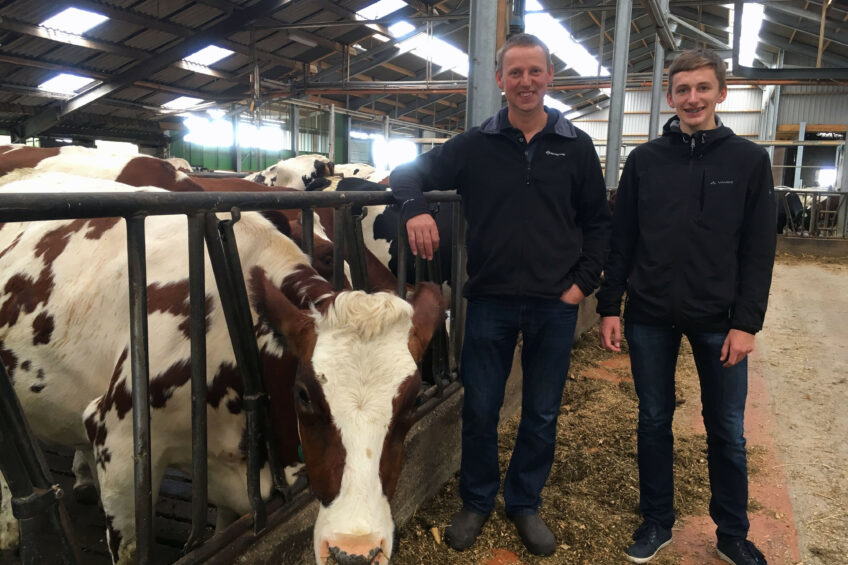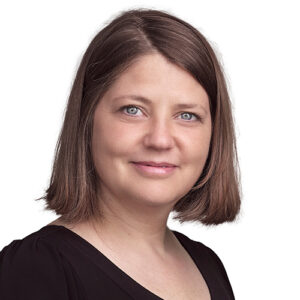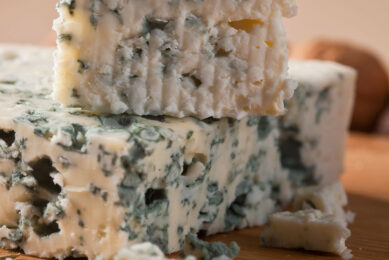Dairy partnership for Belgian brothers

Peter and Bert Boonen run a dairy farm and produce prize-winning cheese. The milk comes from MRI cows. This rare breed thrive well on grass-based, high roughage, low concentrate diets, which is ideal in Belgian production systems.
While the sleepy streets of Hamont-Achel, a small town in northern Belgium, show little signs of life on a Sunday morning, the local cheese shop, Kaasmakerij Catharinadal, is bustling with business. A tinkling bell punctuates the lively atmosphere as each new customer walks through the door. The shop, which is located in a fourteenth-century monastery, is a locally protected landmark.

Inside, Peter Boonen and his wife, Riet, slice and package handcrafted cheese while chatting with customers and passing out samples. With their easy smiles and friendly banter, it is easy to see why their customers visit again and again. Much of their success can be attributed to who they are and how they run their business, yet there’s no denying that their achievements would not be possible were it not for the quality of the product they sell. The quality of Peter’s cheese depends heavily on the quality of the milk his younger brother Bert provides. Bert and his wife Carine raise a rare, dual-purpose cattle breed, Meuse Rhine Issel, which is known for producing lower yields of higher quality milk. Without his number-one customer, Bert knows he wouldn’t be able to justify keeping the breed. But working together, the brothers circumvent major retailers, relying only on each other. This has been a successful and profitable model for both.
History of the monastry
Hamont-Achel lies in the Belgian province of Limburg on the border of the Netherlands. During the fourteenth and fifteenth century, Achel was a small, autonomous state. What serves as the cheese shop today was once a Franciscan monastery founded by two nuns-in-training in 1432. During the French Revolution, Napoleon confiscated the monastery and gave it to Count Cornet de Présent, who later sold it to the Boonen brothers’ great-grandfather. He turned the property into a farm. Creating profit through partnership, it would seem, runs in the Boonen family. In his day, great-grandfather Boonen was the first to unite the region’s pig farmers and organise transport for their fattened pigs to Brussels. Prior to that, traders would come to the village, collect the pigs and transport them to Brussels directly. Since transport was arranged, the farmers were forced to take a lower rate, just one-quarter of what others with transport were being paid. The union effectively cut out the middleman and brought prosperity to the region and its farmers.

Mostly handcrafted cheese
Today, Bert and Corine operate the dairy farm, while Peter and Riet run the cheese shop. While both brothers had wanted to farm, the business was only big enough for one. For this reason, their parents suggested they take food science classes instead of agricultural studies. Without his parents knowing, though, Bert registered for agricultural classes, secretly hoping to take over the farm one day. Peter studied food sciences. “My brother outsmarted me,” said Peter with a laugh. Peter has no regrets though; he loves making cheese. Today, he and his wife produce over 200 dairy products, most of which are handcrafted cheeses made from milk provided by his brother. Local sheep and goat farmers provide milk as well, for which Peter pays a fair price. The quality of Peter’s cheese is supreme. He makes everything from hard cheese washed in Trappist beer to fresh goat’s cheese rolled in pepper and herbs. One, a sharp and buttery blue called Achelse-Grevenbroecker Blauwe, was awarded the world champion of cheeses in 2010 in Lyon, France. The recognition has brought the cheese maker even more success.
“Adding Holstein genetics to the mix was not successful.”
Choosing for MRI cows
Just three kilometres from the cheese shop Bert and Carine raise 70 Meuse Rhine Issel (MRI) cows, a breed that’s unique to the region. While the average cow produces 11,000–12,000 litres per year, MRI cows produce just 7,000 litres each year on average. As farmers switch to higher-yielding genetics, the breed gets more and more rare. Bert chose the breed for several reasons. They thrive well on grass-based, high roughage, low concentrate diets, which is ideal in Belgian production systems. MRI cows have high fertility and calve easily. They have strong feet and legs, and healthy udders. Another benefit is their resistance to disease. Bert says he saves up to 50% on health costs, and because the breed is dual-purpose, they also get revenue for veal. Veal calves are easily fattened and grade well, and they produce lean, nicely marbled meat. While their yields are lower, MRI cows produce milk of superior quality, typically higher in fat and protein. Holsteins, for instance, average 3.2% protein and 4.2% fat content; MRI cattle average 3.9% protein and 4.7% fat.

Improving efficiency of the cows
At one time, Bert tried to improve yields by adding Holstein genetics to the mix. The change was not successful. The cows didn’t do well on ‘regular feed,’ a mix of corn, grass, barley, triticale, and sugar beets. Instead, they required more expensive ‘power’ feed, which increased his cost of production. More importantly, though, the milk they produced was of lesser quality and changed the taste and texture of Peter’s cheese. It had a particularly devastating effect on the prize-winning Achelse-Grevenbroecker Blauwe. With each new generation the Holstein genetics weaken. But as the genetics weaken, so, too, do yields. To compensate, Bert installed an automatic feeder, which distributes feed eight rather than two times per day. He recently purchased two GEA milking robots, which he hopes will lead to increased production. Ultimately, Bert hopes that the yield lost to the breed will be recuperated through increased efficiency. Without his brother’s cheese operation, though, he knows that keeping the breed wouldn’t make financial sense. Each litre costs € 0.34 to produce, and at that price the market is just too volatile. “It’s a very special milk and it is important to get the higher cost of production back through the cheese production,” he concludes.
Join 13,000+ subscribers
Subscribe to our newsletter to stay updated about all the need-to-know content in the dairy sector, two times a week.










